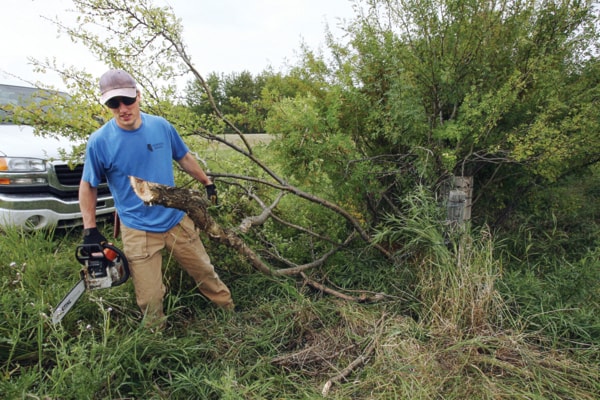Pine Lake’s toxic blue-green algae outbreak shows the importance of preserving the lake’s headwaters, say area conservationists.
To that end, the Nature Conservancy of Canada has purchased a “historic” Pine Lake-area quarter-section containing a large wetland.
It will be added to about 18 previously purchased quarter-sections in the area.
A main aim is to help protect the wetlands that are Pine Lake’s natural filtration system.
“Keeping them in a native state is vital for the health of the whole watershed,” said Colleen McPhee, the non-profit group’s conservation co-ordinator for Central Alberta.
Blue-green algae killed hundreds of fish in the lake last week, prompting Alberta Health Services to issue a public advisory against swimming in the water body, or consuming lake fish or water.
The toxic algae grows during hot weather in lakes overabundant in nutrients. Since this situation is caused by contaminants, such as agricultural or lawn chemicals, running into the water, “conserving lands that contain the headwaters that flow into the lake is one of our main goals,” said Bob Demulder, regional vice-president of the Nature Conservancy of Canada, Alberta region.
The Boote land was also acquired to preserve the surrounding natural grasslands and parkland for waterfowl, wildlife and people.
“This property is an ecologically significant landscape,” said Demulder, who noted that many species depend on the land for breeding habitat and a migratory staging area.
Area residents will also have access to hike on the natural grasses and parkland, which are becoming rarer in this province.
The quarter-section “is a wonderful property,” said McPhee, who lives nearby and remembers always being impressed by the crocuses and the other native species growing on it.
The former farm, about 1.6 km northwest of Pine Lake, was owned by the homesteading Boote family, who used the land for cattle grazing, but never turned it into crops.
McPhee said she’s loved the natural look of the property ever since she was a child, with its gently undulating topography and diverse and abundant habitat for migratory waterfowl, shorebirds and wildlife such as mule deer, coyote, moose and red-tailed hawks.
She was thrilled when members of the Boote family decided to sell it to the Nature Conservancy of Canada so the land can be held in a natural state for perpetuity.
The $500,000 sale was made possible through a federal government grant and a donation from TransCanada Corp.
Anyone who wants to get to know the Boote property can volunteer in stewardship activities the non-profit group is starting on Thursday.
There will be opportunities for bird watching and hiking between taking down an old fence and pulling up invasive weeds. To register, visit www.conservationvolunteers.ca
lmichelin@www.reddeeradvocate.com
